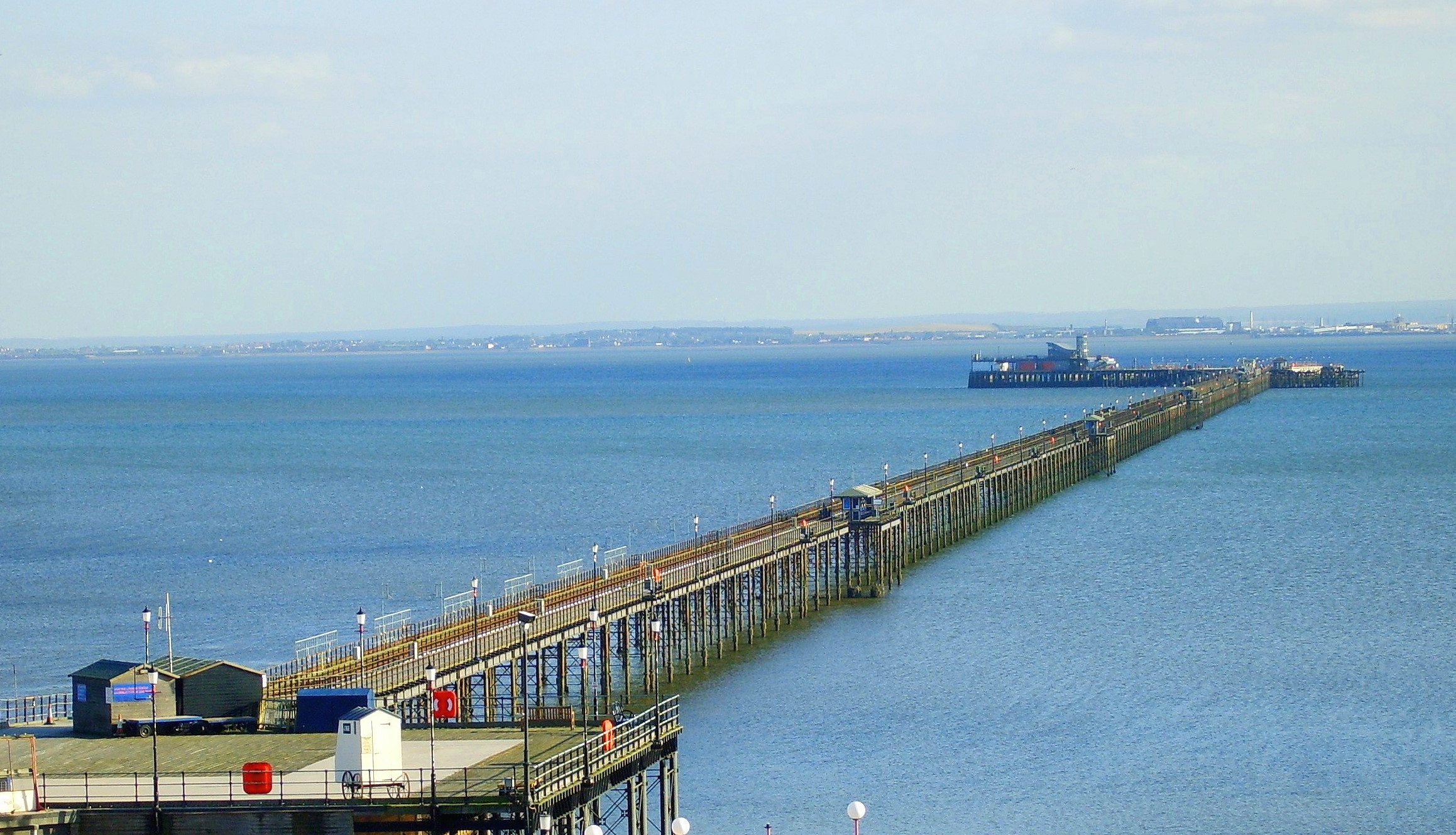Southend Pier, located in the coastal town of Southend-on-Sea in Essex, United Kingdom, is an iconic and historic structure that has played a significant role in the town’s development as a popular seaside resort. Stretching out into the Thames Estuary, it holds the distinction of being the longest pleasure pier in the world, measuring approximately 1.34 miles (2.16 kilometers) in length.
Origins and Early Development
The origins of Southend Pier date back to the early 19th century. The first structure was a wooden jetty built in 1830 to facilitate the landing of passengers and goods. At the time, Southend was emerging as a favored destination for Victorian holidaymakers seeking the fresh sea air and leisure activities. The pier was essential for connecting Southend with London and other parts of England via the river.
Over the years, the original wooden jetty underwent several expansions and reconstructions. By the late 19th century, the pier was transformed into a more substantial iron structure to accommodate the increasing number of visitors arriving by steamboat. This development was crucial in boosting tourism and the local economy.
Growth and Popularity
During the Victorian and Edwardian eras, Southend Pier became one of the most popular piers in England. It featured various attractions including a pavilion, amusement arcades, and refreshment kiosks. The pier also served as a landing stage for pleasure steamers sailing to and from London, making it a bustling hub of activity.
The pier’s length was extended over time to its current record-breaking size, making it a remarkable feat of engineering. Its length allowed steamboats to dock even at low tide, ensuring a steady flow of visitors.
Challenges and Restoration
Like many historic piers, Southend Pier has faced numerous challenges, including damage from storms, fires, and general wear over the decades. Notably, it suffered significant fire damage in 1959 and again in 1976, which led to periods of closure and costly repairs.
Despite these setbacks, the pier has been carefully restored and maintained, reflecting its importance as a cultural and historical asset. Modern renovations have respected its heritage while incorporating safety improvements and visitor facilities.
Present Day
Today, Southend Pier remains a beloved landmark and a symbol of the town’s seaside heritage. It attracts tourists from across the UK and beyond, offering scenic walks, fishing spots, and access to the pier railway—a narrow-gauge electric railway that transports visitors along the length of the pier.
The pier is also the site of community events and celebrations, continuing its role as a focal point for social and recreational life in Southend-on-Sea.
Conclusion
Southend Pier stands as a testament to the Victorian spirit of leisure and engineering. Its enduring presence over nearly two centuries highlights the importance of preserving historical landmarks that connect us to our past while enriching contemporary community life. As the longest pleasure pier in the world, it remains a proud symbol of Southend-on-Sea and an essential part of the United Kingdom’s coastal heritage.
Discover more from TheHubBuzz.com
Subscribe to get the latest posts sent to your email.

